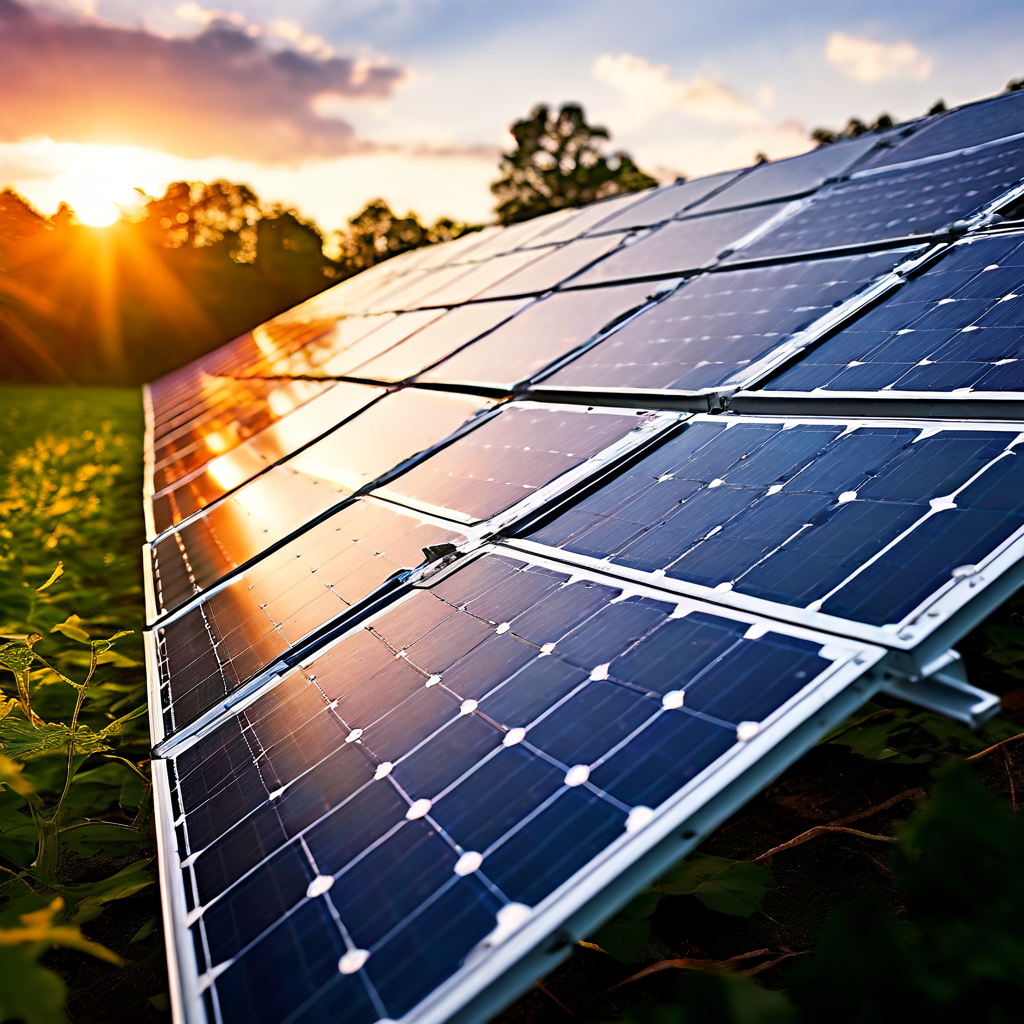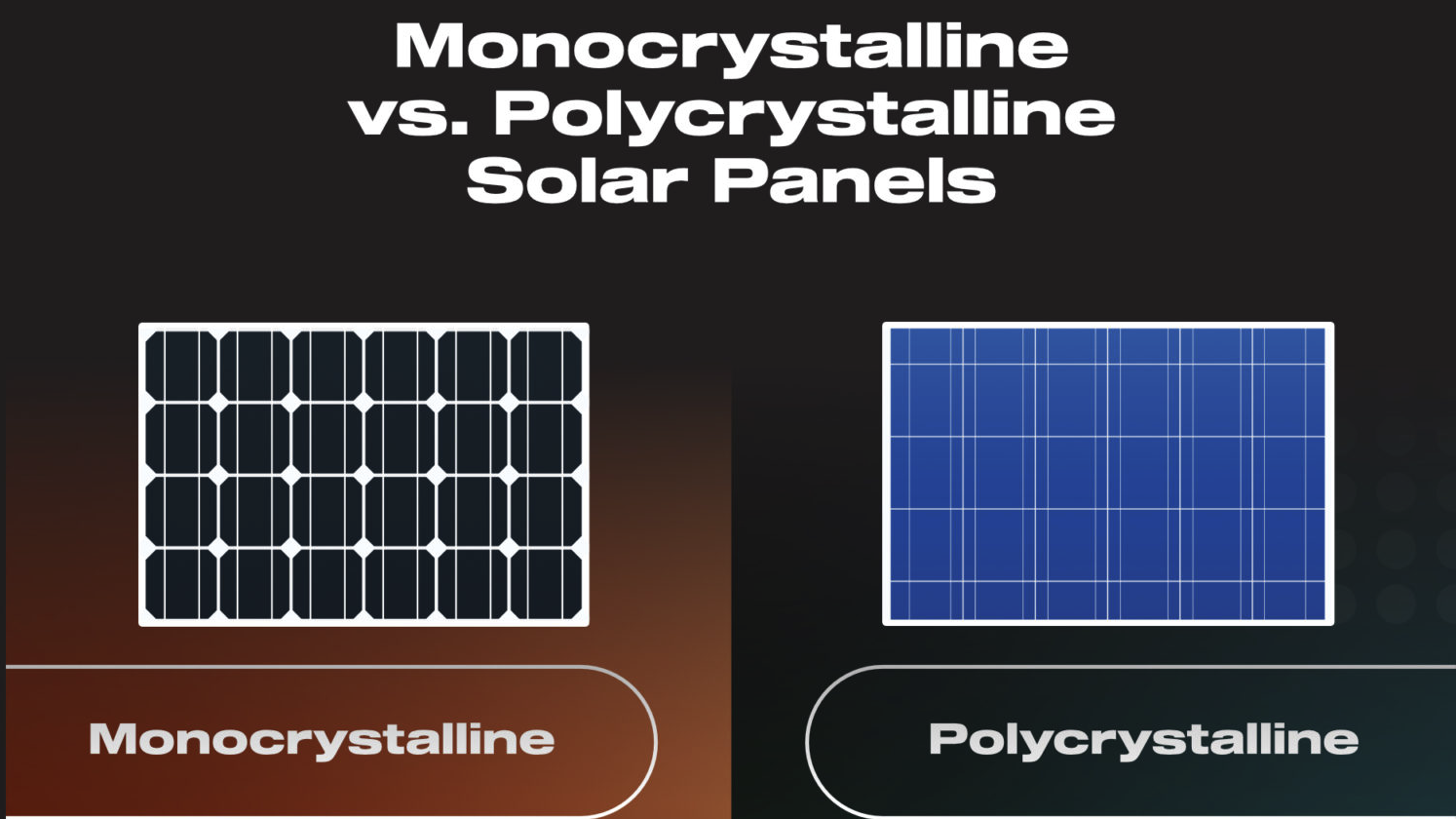In the ever-evolving landscape of solar energy, monocrystalline solar panels have emerged as a game-changer, offering unparalleled efficiency and long-lasting durability. As you embark on your journey to harness the power of the sun, understanding the advantages of this cutting-edge technology is crucial. In this comprehensive guide, we’ll dive deep into the world of monocrystalline solar panels, exploring their unique features, benefits, and why they are the perfect choice for your solar energy needs.
How Monocrystalline Solar Panels Work
Monocrystalline solar panels are crafted from a single, pure crystal of silicon, meticulously grown and cut into wafers. This uniform crystalline structure allows for optimal electron flow, resulting in higher efficiency compared to other solar panel types. The cells in monocrystalline panels are easily recognizable by their sleek, black appearance, a testament to their premium quality and advanced manufacturing process.

The Photovoltaic Effect: Harnessing the Sun’s Energy
At the heart of monocrystalline solar panels lies the photovoltaic effect, a phenomenon where sunlight is converted directly into electricity. When photons from the sun strike the solar cells, they excite electrons within the silicon crystal, causing them to break free from their atomic bonds. These free electrons flow through the cell, generating an electric current that can be harnessed to power homes and businesses. The photovoltaic effect is the driving force behind the efficiency and reliability of monocrystalline panels.
Components of a Monocrystalline Solar Panel
A typical monocrystalline solar panel consists of several key components that work together to maximize energy production:
- Solar Cells: The heart of the panel, made from high-purity monocrystalline silicon wafers that convert sunlight into electricity.
- Glass Cover: A durable, transparent layer that protects the solar cells from the elements while allowing sunlight to pass through.
- Encapsulant: A protective material, typically EVA (ethylene-vinyl acetate), that seals the solar cells and prevents moisture and air from entering.
- Backsheet: A protective layer on the rear of the panel that provides insulation and prevents moisture damage.
- Frame: An aluminum frame that provides structural support and allows for easy mounting and installation.
By understanding the components of a solar panel, you can better appreciate the advanced engineering and design that goes into creating high-performance monocrystalline panels.
The Efficiency Advantage
One of the most significant advantages of monocrystalline solar panels is their unrivaled efficiency. With an average efficiency rate of 15-20%, these panels can convert a larger portion of sunlight into usable electricity. This means that you can generate more power with fewer panels, making them ideal for homes or businesses with limited roof space. The higher efficiency also translates to better performance in low-light conditions, ensuring consistent energy production even on cloudy days.
Maximizing Solar Panel Efficiency
To fully harness the efficiency potential of monocrystalline panels, several factors must be considered:
- Panel Orientation: Orienting panels towards the south (in the northern hemisphere) or north (in the southern hemisphere) ensures optimal exposure to direct sunlight throughout the day.
- Tilt Angle: Adjusting the tilt angle of the panels based on your latitude maximizes energy production by capturing the most direct sunlight.
- Shading: Minimizing shading from nearby trees, buildings, or other obstructions is crucial for maintaining high efficiency.
- Regular Maintenance: Keeping panels clean and free from debris, such as dust, leaves, or snow, ensures optimal light absorption and efficiency.
By maximizing solar panel efficiency through proper installation and maintenance, you can unlock the full potential of your monocrystalline solar system.
Monocrystalline vs. Other Panel Types
When considering solar panel options, it’s essential to understand how monocrystalline panels compare to other technologies available in the market.
Monocrystalline vs. Polycrystalline: A Performance Comparison
Polycrystalline solar panels, made from multiple silicon crystals, are another popular choice for solar energy systems. While both types have their merits, monocrystalline panels have a clear edge in terms of performance. Due to their uniform crystal structure, monocrystalline cells have a higher efficiency and a lower temperature coefficient, meaning they maintain their performance better in high-temperature environments. Additionally, monocrystalline panels have a sleeker, more aesthetically pleasing appearance, making them a popular choice for homeowners who value both form and function.
For a more in-depth comparison, read our article on monocrystalline vs. other panel types.
Thin-Film Panels: An Emerging Technology
Thin-film solar panels, made from materials like cadmium telluride (CdTe), copper indium gallium selenide (CIGS), or amorphous silicon (a-Si), are an emerging technology in the solar industry. While they offer some advantages, such as flexibility and lightweight design, they currently have lower efficiency rates compared to monocrystalline panels. As thin-film technology continues to advance, it may become a more viable option in the future.
Learn more about the potential and adoption of thin-film panels in our dedicated article.
The Durability Factor
Investing in solar energy is a long-term commitment, and you want to ensure that your panels can withstand the test of time. Monocrystalline solar panels are renowned for their exceptional durability and longevity. Made from high-quality, pure silicon, these panels are built to resist degradation and maintain their efficiency over decades. Many manufacturers offer warranties of 25 years or more, giving you peace of mind and ensuring a reliable, long-lasting solar energy system.
How Long Do Solar Panels Last?
The lifespan of a solar panel depends on various factors, such as the quality of materials, manufacturing process, and environmental conditions. However, monocrystalline panels are known for their impressive longevity, often lasting 25-30 years or more. This extended lifespan ensures that your investment in solar energy pays off in the long run, providing clean, renewable power for decades to come.
Discover more about the lifespan of solar panels and factors that influence their durability in our comprehensive article.
Resilience in Extreme Conditions
Monocrystalline solar panels are engineered to withstand harsh weather conditions, including high winds, heavy snow loads, and even hail. Their robust construction and tempered glass coating provide excellent protection against the elements, ensuring your investment remains safe and functional in any climate. Whether you live in an area prone to extreme temperatures or severe weather events, monocrystalline panels have the resilience to keep your solar energy system running smoothly.
The Environmental Impact
By choosing monocrystalline solar panels, you are not only investing in a reliable and efficient energy source but also making a positive impact on the environment. Solar energy is clean, renewable, and emits no greenhouse gases, helping to reduce your carbon footprint. With their higher efficiency, monocrystalline panels maximize your contribution to a greener future, allowing you to generate more clean energy with fewer resources.
Solar and Wind Energy: A Powerful Combination
While solar energy is a fantastic way to reduce your environmental impact, combining it with wind energy can take your sustainability efforts to the next level. By harnessing the power of both the sun and the wind, you can create a more reliable and efficient renewable energy system. Wind turbines can generate electricity during periods of low solar irradiance, ensuring a steady supply of clean energy throughout the day and night.
Explore the benefits of combining solar and wind energy in our informative article.

Choosing the Right Solar Panels for Your Home
With so many solar panel options available, selecting the best one for your home can be a daunting task. Here are some key factors to consider when making your decision:
- Efficiency: Opt for high-efficiency panels, like monocrystalline, to maximize energy production and minimize the number of panels needed.
- Durability: Choose panels with robust construction and long warranties to ensure a reliable, long-lasting solar energy system.
- Size and Aesthetics: Consider the available space on your roof and the appearance of the panels to find a solution that fits your home’s aesthetic.
- Cost: While monocrystalline panels may have a higher upfront cost, their superior efficiency and durability often make them a more cost-effective choice in the long run.
For a comprehensive guide on selecting the best solar panels for your home, read our article on the top solar panels for homeowners.
Conclusion
In the quest for a sustainable and reliable solar energy solution, monocrystalline solar panels stand tall as the perfect fusion of efficiency and durability. Their superior performance, sleek design, and long-lasting quality make them an excellent choice for homeowners and businesses alike. By harnessing the power of monocrystalline technology, you can enjoy the benefits of clean, renewable energy while making a positive impact on the environment. As you embark on your solar journey, consider the advantages of monocrystalline panels and take a confident step towards a brighter, more sustainable future.
While monocrystalline solar panels tend to be more expensive than polycrystalline or thin-film alternatives, their higher efficiency and longer lifespan often justify the extra cost. Monocrystalline panels can generate more energy per square foot, making them an excellent choice for installations with limited space. Additionally, the long-term performance and durability of monocrystalline panels can result in a better return on investment over the life of the system.
Monocrystalline solar panels are an excellent choice for homes or businesses with limited roof space, as their high efficiency allows for maximum energy production in a smaller area. They are also well-suited for regions with high temperatures or low-light conditions, as they maintain their performance better than polycrystalline panels in these environments. However, if upfront cost is a primary concern, polycrystalline panels may be a more suitable option. It’s best to consult with a professional solar installer to determine the best panel type for your specific needs and location.
Monocrystalline solar panels are known for their durability and long lifespan, typically lasting 25 to 30 years or more. Many manufacturers offer warranties of 25 years or longer on their monocrystalline panels, reflecting their confidence in the product’s long-term performance. With proper installation and maintenance, monocrystalline panels can continue to generate clean, reliable energy for decades.
Yes, monocrystalline solar panels are recyclable. The solar industry is working to develop and implement recycling programs to recover and reuse the valuable materials in solar panels, including silicon, glass, and metals. Many manufacturers have already established recycling initiatives to minimize waste and ensure the sustainable lifecycle of their products. As the demand for solar energy grows, the industry is expected to continue prioritizing recycling and resource conservation.